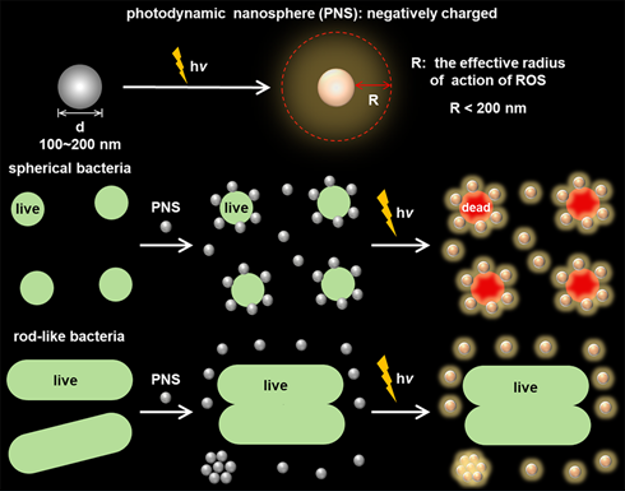Recently, the research team led by Professor YANG Lihua from University of Science and Technology of China (USTC) propose to give photodynamic therapy, a wide-spectrum modality, the ability to distinguish the target bacteria, thus converting it into a narrow-spectrum one. The results are published in The Journal of Physical Chemistry Letters on March 19th.
To win the race against bacterial resistance, novel antimicrobial agents and modalities are urgently needed. As a promising solution, narrow-spectrum antimicrobials destroy the target pathogenic bacteria specifically, thereby generating fewer off-target effects on the microbiome and decreasing the pressure to evolve resistance.
Nonetheless, out of cost-versus-profit consideration, companies prefer to invest in wide-spectrum antimicrobials that kill all bacteria. Also, there is intrinsic difficulty in telling a pathogenic bacterium and a beneficial one apart. As a result, narrow-spectrum antimicrobials are still extremely limited in diversity and number.
The team found that negatively charged nanospheres adsorb preferentially onto spherical bacteria but not onto rodlike ones. This bacterial morphologytargeting selectivity, combined with the extremely limited effective radii of action of reactive oxygen species (ROS), enabled photodynamic nanospheres to kill over 99% of inoculated spherical bacteria upon light irradiation and less than 1% of rod-like bacteria under comparable conditions. This is verified by experiments using different nanospheres and bacteria.

Schematic illustrations of the selective adsorption of negatively charged nanospheres onto spherical bacteria but not onto rod-like bacteria
Photodynamic therapy is currently available in clinics for treating skin disorders. This work converts photodynamic therapy into a narrow-spectrum modality by a previously unnoticed physics recognition pathway and suggests a new approach for treating infections characterized by overthriving spherical bacteria in niches naturally dominated by rod-like bacteria.
The research is supported by the National Natural Science Foundation of China and the National Synchrotron Radiation Laboratory at USTC.
Paper link:
https://dx.doi.org/10.1021/acs.jpclett.0c00287
(Written by YANG Ziyi, edited by YE Zhenzhen, USTC News Center)